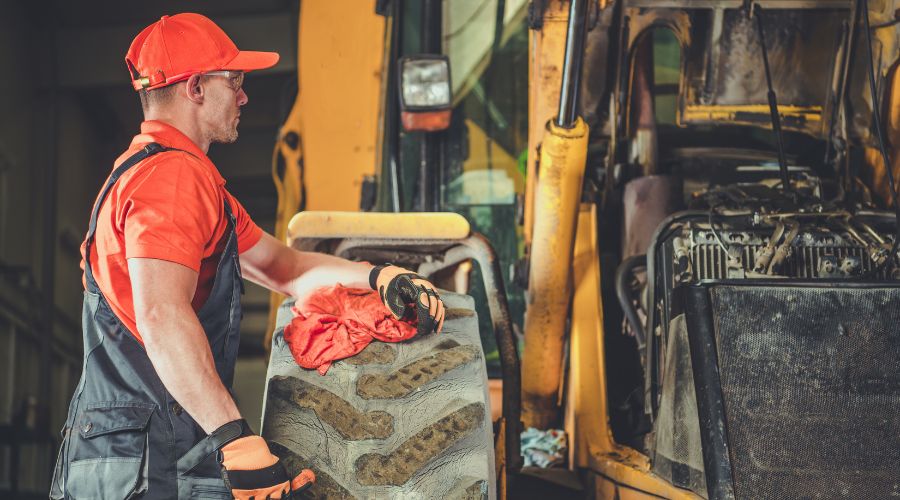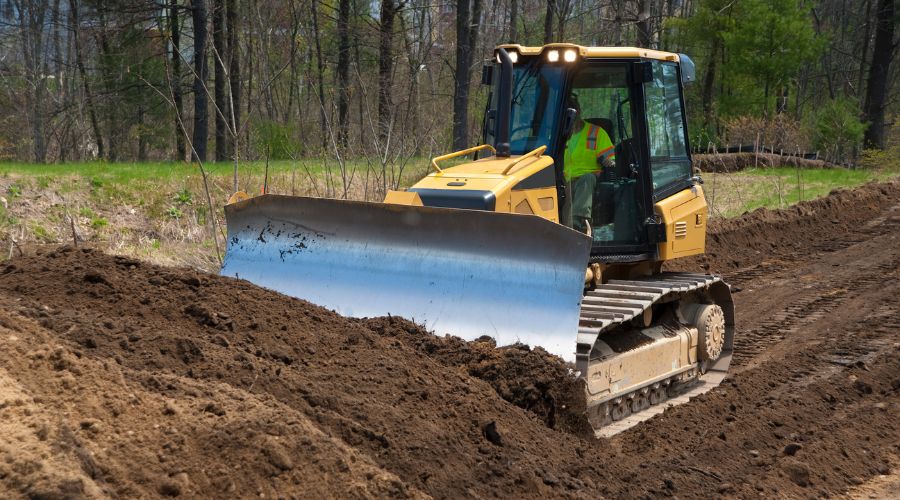Bulldozers are heavy-duty, powerful construction equipment that comes in different sizes and weights and are used to push, dig, demolish, and level soil and waste on building sites, among other activities. These strong giants are renowned for their massive, imposing front blades, which make them experts in material control. Some bulldozers also include rear-mounted rippers to handle difficult terrain. They are essential to both modest and substantial construction projects.
It’s essential to note that a true bulldozer is distinguished by its primary function of pushing materials, as opposed to other heavy machinery like front-end loaders, which are meant for material transport. In our blog post, we will explore the world of bulldozers in more detail. We will discuss their various sizes, weights, and their crucial roles in the construction industry. Additionally, we will answer the commonly asked question: “How much does a bulldozer weigh?” Join us as we gain a better understanding of these engineering marvels and their significance in construction.
1. Key Specifications for Assessing Bulldozer’s Weight

The weight of a bulldozer is directly influenced by several key specifications that are integral to its design and functionality. Understanding how these specifications impact a bulldozer’s weight is essential for making informed decisions when selecting the right machine for specific construction projects.
Operating Weight- The most obvious factor affecting a bulldozer’s weight is its operating weight. This specification encompasses the combined mass of the bulldozer itself, the operator, and the fuel it carries. As this weight increases, so does the overall mass of the bulldozer.
Bulldozer Frame Size- The dimensions of the bulldozer’s frame, including its length and width, have a notable effect on its weight. Larger frames provide enhanced stability and blade capacity but contribute to a heavier machine
Blade- Different blade types, such as S Blades and U Blades, offer varying capacities for pushing and moving materials. The size and weight of the blade assembly itself are directly related to the bulldozer’s overall weight.
Engine Model & Horsepower- The engine’s model and its horsepower significantly impact the bulldozer’s weight. More powerful engines tend to be larger and heavier, adding to the machine’s overall mass. However, they also contribute to improved performance and efficiency.
Cab Type- The type of cab, whether open or enclosed, adds weight based on its design and materials. Enclosed cabs, although adding to the bulldozer’s weight, provide operator comfort and safety.
Manufacturer- The choice of manufacturer influences the bulldozer’s weight due to variations in design, construction materials, and engineering standards. Renowned manufacturers may build heavier but stronger and longer-lasting equipment.
Fuel Tank Capacity- The fuel tank’s capacity and fuel efficiency can also impact the bulldozer’s weight. A larger tank will increase the overall mass but may be necessary for extended projects.
2. Average Weight of Bulldozer

The weight of a bulldozer can vary significantly based on several key specifications, such as its size, frame dimensions, engine power, and more. The size and type of bulldozer required for a specific job also play a crucial role in determining its weight. Typically, bulldozer weights can range from 8 to 180 tons, which translates to approximately 8,000 to 108,000 kilograms.
Typically, a bulldozer’s operating weight increases as it’s designed to handle larger and heavier loads. When examining bulldozer specifications, you’ll often come across the term “operating weight.” This figure represents how much the bulldozer will weigh during its actual operation, taking into account factors like fuel, attachments, and the human operator. Heavier bulldozers, those weighing more than 100,000 pounds, are typically employed in demanding tasks like mining.
Overall, the average weight of a bulldozer can vary widely, depending on the specific requirements of the job and the machine’s specifications. Larger and more powerful bulldozers are equipped to tackle heavier tasks and, consequently, have a higher operating weight.
Let’s take a look at the average weights of some of the standard and popular bulldozer models, considering their operational capacities.
| Bulldozer Model | Weight in Kilograms (kg) | Weight in Pounds (lb) |
|---|---|---|
| Komatsu D575A-3SD | 152,600 kg | 336,400 lb |
| Caterpillar D11T | 112,700 kg | 248,500 lb |
| ACCO Super Bulldozer | 183,000 kg | 404,805 lb |
| John Deere 700K Crawler | 13,733–14,193 kg | 30,275–31,290 lb |
| CAT D3K2 | 7,958 kg | 17,544 lb |

